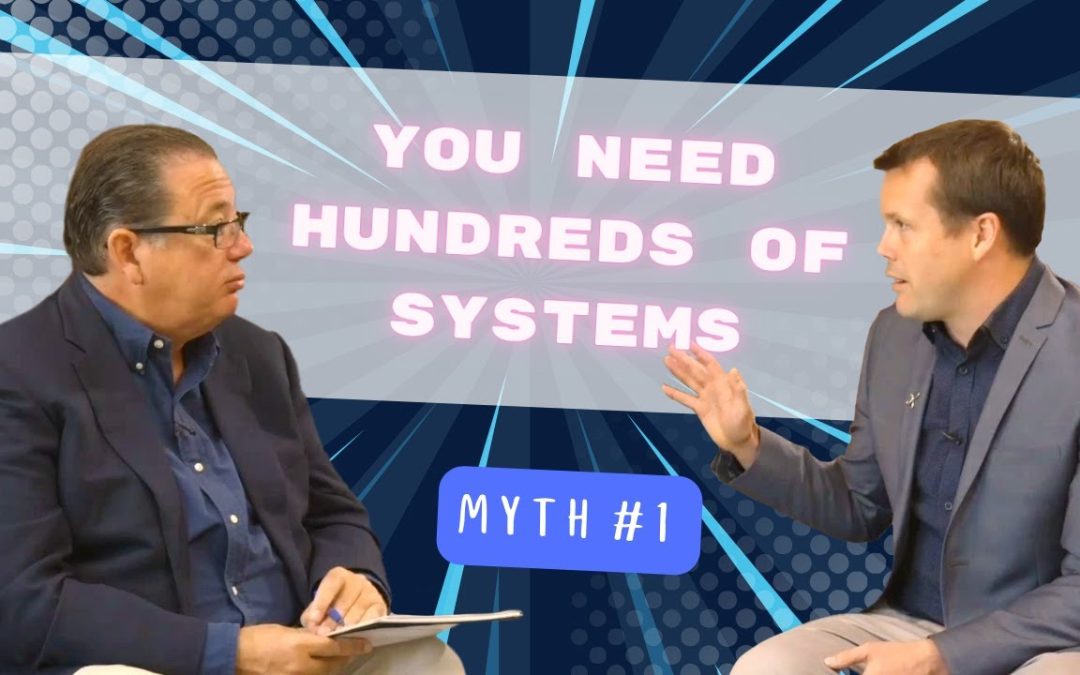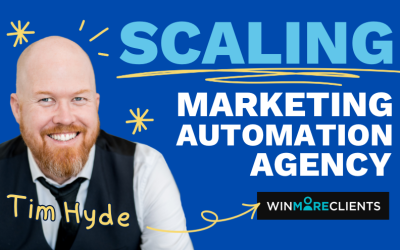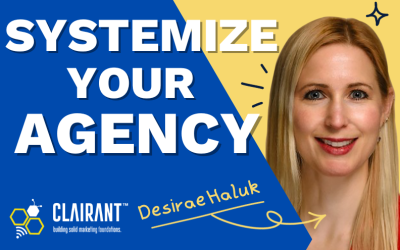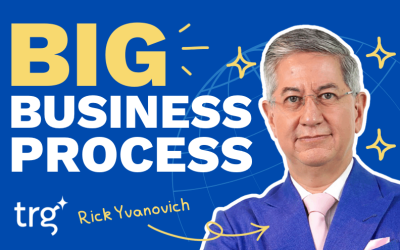When starting out, over-systemisation often fails. Why? Because your staff will struggle to keep up with a sudden overload of systems, they’ll struggle to manage them, and the systems quickly become outdated.
That’s why you need to start small. Aim for about 15-20 critical systems to improve product and service delivery.
Identify your critical systems from areas such as:
✅Lead generation
✅Lead conversion
✅Client onboarding
✅Delivery
✅Client return/ referrals
Once these critical systems are in place, you’ll notice improved efficiency, reduced time-wastage, and increased productivity.
Watch this video now to learn more about how to start systemising by identifying your critical systems:
Timestamps:
0:03 – Myth 1: You’ll Need To Create Hundreds Of Systems
0:11 – The oversystemisation myth.
0:41 – The business owner who over-systemised and failed
1:43 – Why a business owner needs to start with 15-20 central systems
2:09 – Benefits of identifying core systems
2:47 – What is the critical client flow?
3:00 – Example of how an accounting firm can identify the critical systems they need
4:13 – The importance of the critical client flow in the identification of central systems
5:30 – Grab your copy of SYSTEMology today
Formatted Transcription:
Debunking The Myth You Need To Create Hundreds Of Systems To Scale Your Business
People, for some reason, have built it up in their heads that business owners are creative people. However, business owners aren’t often very detailed or think in terms of systems.
Like you, other business owners imagine what they think systems are about. And in most cases, they come up with the wrong picture because they’re looking at McDonald’s, 711, or businesses with an encyclopedia-style book full of systems, processes, and page operations.
For example, a few years ago, I worked with a guy called Mike Rhodes. He helped and coached business owners through growing their businesses, particularly through systems. But he’d sold up and moved to Melbourne, where he started a digital agency.
One of the things he worked on was systemizing his business because he already knew the benefits of creating systems. And I remember he created hundreds of systems. Which he printed and stuck on A4 paper against the wall so his staff would see them and remember to use these systems.
And you can only imagine what happened. Mike’s approach failed. No one looked at these systems. And soon, these systems got out of date since no one was managing them.
And this gave me real key insight. I saw firsthand what happens with over-systemization.
What you need to do is to start with 15 to 20 central systems that you require for the delivery of your product or service. Everything from
- How do you get leads?
- How do you sell to your leads?
- How do you onboard them?
- How do you deliver your product or service?
- How do you get them to come back?
If you concentrate on these points, you’ll come up with 15-20 systems that are fundamental to how you run your business. And if you can get these 15-20 systems right, you’ll have huge improvements in your business with staff efficiency, reduced time wastage, and keeping focused and on track with tasks.
So, the big myth is you need hundreds of systems. When the truth of the matter is, to start off, you only need 15 to 20 systems. They will be enough to get you started and significantly improve your business.
Now, how do you create these 15-20 systems?
Here at SYSTEMology, we have a process called critical client flow. It’s about mapping the customer’s journey from attracting them all the way through to the delivery and then getting them to come back.
For example, as a business owner, right at the top of your funnel, you should be thinking, “What are some of the systems and processes you can use to attract people into your business?”
- Is it using SEO?
- Relying on referrals
- Using AdWords
- Is it speaking on stage?
- Is it offline advertising?
The next step is to think about how you’ll generate business by gaining your customers’ attention. And once you’ve got someone’s attention, how do you engage them with your business? How do you get them into your funnel? Do you get them to watch a webinar or download a PDF?
Then once someone’s ready to become a client, what’s the next step for them? Do they fill out a form or do they pick up the phone and call you? Do you need a system for how to answer the phone? What are you going to do to direct them to the right person?
Once you’ve created a connection with a customer, you’ll need to sell to them. How do you actually sell to them? Do you have a discovery process? What do you say on the phone? How do you generate a proposal?
Every step in this process is part of the client flow. That’s why we’ve created the critical client flow system that helps you identify the visual flow of how your customers move through your business. And each step they go through represents a system you need to create.
So once you chart your client’s flow, you’ll be able to identify 15-20 systems fundamental to your business.
Some systems are going to require more detail. For example, the delivery of your product or service. You might actually have subsystems underneath that.
However, at the start, you don’t have to worry about creating subsystems. Your first goal should be to create a correct client flow. And getting the critical systems running to help you deliver your service or product more efficiently.









